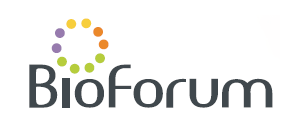The gold standard: understanding engineered gold nanoparticle (AuNP) interactions and fate in the soil-water environment
Ishai Dror, Earth and Planetary Sciences, Weizmann Institute Of Science, Rehovot, Israel (ishai.dror@weizmann.ac.il)
Deletombe Marina, Institut des Sciences Analytiques et de Physico-Chimie pour l'Environnement et les Matériaux (IPREM), Pau, France
Cécile Courrèges, Institut des Sciences Analytiques et de Physico-Chimie pour l'Environnement et les Matériaux (IPREM), Pau, France
Javier Jiménez-Lamana, Institut des Sciences Analytiques et de Physico-Chimie pour l'Environnement et les Matériaux (IPREM), Pau, France
Nanotechnology has emerged as a transformative field, impacting many industries; it holds great promise for advanced agriculture practices. Engineered gold nanoparticles (AuNPs) are one example of new materials that have the potential to advance agricultural practices through precise delivery systems. However, environmental exposure to AuNPs raises concerns about their interactions and transformations in soil-water environments. In this work, we present experiments that investigated AuNP interactions with anions prevalent in soil-water systems, including phosphates, sulfates, and sulfides. Using high-resolution methodologies such as XPS, ToF-SIMS, SEM, and SP-ICP-MS, we comprehensively assessed changes in AuNP surface chemistry and size distribution. SEM and SP-ICP-MS provided complementary data on nanoparticle morphology, aggregation, and dissolved species. XPS revealed surface oxidation states, while ToF-SIMS identified spatial distributions of surface ligands. The results highlight the dynamic interplay between AuNP surfaces and environmental conditions, showing notable shifts in particle stability and ligand binding. These findings enhance understanding of AuNP transport and mobility in soil-water matrices, addressing a critical barrier to the sustainable application of nanotechnology in agriculture. By advancing knowledge of nanoscale interactions, this study provides valuable insights into minimizing ecological risks while maximizing agricultural benefits.
Organized & Produced by:

POB 4043, Ness Ziona 70400, Israel
Tel.: +972-8-9313070, Fax: +972-8-9313071
Site: www.bioforum.org.il,
E-mail: hagit@bioforum.co.il